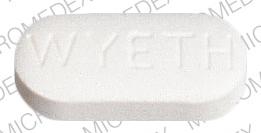Unipen Side Effects
Generic name: nafcillin
Medically reviewed by Drugs.com. Last updated on Jul 24, 2023.
Note: This document contains side effect information about nafcillin. Some dosage forms listed on this page may not apply to the brand name Unipen.
Applies to nafcillin: parenteral injection, parenteral powder for injection.
Side effects include:
Hypersensitivity reactions; local reactions (phlebitis, thrombophlebitis); renal, hepatic, or nervous system effects with high dosage.
For Healthcare Professionals
Applies to nafcillin: injectable powder for injection, intravenous solution, oral capsule.
Hypersensitivity
Common (1% to 10%): Allergic reactions (included immediate and delayed reactions)
Very rare (less than 0.01%): Anaphylactic shock resulting in death
Frequency not reported: Immediate allergic reaction (included urticaria, pruritus, angioedema, laryngospasm, bronchospasm, hypotension, vascular collapse, death), anaphylaxis, accelerated immediate allergic reaction (included urticaria, pruritus, fever, laryngeal edema, laryngospasm, hypotension), delayed allergic reaction (included serum sickness-like reactions [i.e., fever, malaise, urticaria, myalgia, arthralgia, abdominal pain], various skin rashes)[Ref]
Immediate allergic reactions usually occurred within 20 minutes of administration and ranged in severity from urticaria and pruritus to angioedema, laryngospasm, bronchospasm, hypotension, vascular collapse, and death; such immediate anaphylactic reactions were very rare and usually occurred after parenteral therapy but have occurred with oral therapy. An accelerated immediate allergic reaction has occurred between 20 minutes and 48 hours after administration and has included urticaria, pruritus, and fever; although laryngeal edema, laryngospasm, and hypotension occasionally occurred, fatality was uncommon.
Delayed allergic reactions to penicillin therapy usually occurred after 48 hours and sometimes as late as 2 to 4 weeks after starting therapy. Manifestations of this reaction included serum sickness-like symptoms (i.e., fever, malaise, urticaria, myalgia, arthralgia, abdominal pain) and various skin rashes.[Ref]
Dermatologic
Frequency not reported: Rash, urticaria, pruritus[Ref]
Gastrointestinal
Frequency not reported: Nausea, vomiting, diarrhea, stomatitis, black or hairy tongue, gastrointestinal irritation, pseudomembranous colitis, Clostridium difficile-associated diarrhea[Ref]
Nausea, vomiting, diarrhea, stomatitis, black or hairy tongue, and gastrointestinal irritation have occurred, especially during oral penicillin therapy.
Onset of pseudomembranous colitis symptoms have occurred during and after antibiotic therapy.[Ref]
Hematologic
Frequency not reported: Agranulocytosis, neutropenia, bone marrow depression, eosinophilia, platelet dysfunction (with prolonged bleeding times)[Ref]
At least 3 cases of platelet dysfunction with prolonged bleeding times have been reported with this drug. All cases resolved after this drug was discontinued.[Ref]
Hepatic
Frequency not reported: Elevated liver transaminases, cholestasis, hepatotoxicity[Ref]
Elevated liver transaminases and cholestasis have been reported, especially with high doses.[Ref]
Local
Frequency not reported: IV injection site pain, IV injection site swelling, IV injection site inflammation, IV injection site phlebitis, IV injection site thrombophlebitis, skin sloughing at IV injection site, severe tissue necrosis with sloughing (secondary to subcutaneous extravasation), pain at IM injection site[Ref]
Nervous system
Frequency not reported: Neurotoxic reactions, neurotoxicity[Ref]
Neurotoxic reactions (similar to those observed with penicillin G) have occurred with large IV or intraventricular doses, especially in patients with concurrent liver and renal dysfunction.[Ref]
Other
Frequency not reported: Fever[Ref]
Renal
Frequency not reported: Renal tubular damage, interstitial nephritis, nephrotoxicity (included rash, fever, eosinophilia, hematuria, proteinuria, acute kidney injury, renal insufficiency)[Ref]
Genitourinary
Frequency not reported: Hematuria, proteinuria[Ref]
More about Unipen (nafcillin)
- Check interactions
- Compare alternatives
- Drug images
- Dosage information
- During pregnancy
- Drug class: penicillinase resistant penicillins
- Breastfeeding
Professional resources
Related treatment guides
References
1. Klein JO, Finland M. The new penicillins (concluded). N Engl J Med. 1963;269:1129-34.
2. Product Information. Unipen (nafcillin). Wyeth-Ayerst Laboratories. 2002;PROD.
3. Dahlgren AF. Adverse drug reactions in home care patients receiving nafcillin or oxacillin. Am J Health Syst Pharm. 1997;54:1176-9.
4. Carpenter J. Neutropenia induced by semisynthetic penicillin. South Med J. 1980;73:745-8.
5. Alexander DP, Russo ME, Fohrman DE, Rothstein G. Nafcillin-induced platelet dysfunction and bleeding. Antimicrob Agents Chemother. 1983;23:59-62.
6. Jeter EK, Scott A, Kizer J, Lazarchick J. Impaired platelet function associated with parenteral nafcillin. Ann Clin Lab Sci. 1990;20:79-84.
7. Kitzing W, Nelson JD, Mohs E. Comparative toxicities of methicillin and nafcillin. Am J Dis Child. 1981;135:52-5.
8. Walbroehl GS, John PG. Antibiotic-associated neutropenia. Am Fam Physician. 1992;45:2237-41.
9. Greene GR, Cohen E. Nafcillin-induced neutropenia in children. Pediatrics. 1978;61:94-7.
10. Couchonnal GJ, Hinthorn DR, Hodges GR, Liu C. Nafcillin-associated granulocytopenia. South Med J. 1978;71:1356-8.
11. Presti ME, Janney CG, Neuschwandertetri BA. Nafcillin-associated hepatotoxicity: report of a case and review of the literature. Dig Dis Sci. 1996;41:180-4.
12. Lestico MR, Vick KE, Hetsko CM. Hepatic and renal dysfunction following nafcillin administration. Ann Pharmacother. 1992;26:985-90.
13. Zenk KE, Dungy CI, Greene GR. Nafcillin extravasation injury. Use of hyaluronidase as an antidote. Am J Dis Child. 1981;135:1113-4.
14. Tilden SJ, Craft JC, Cano R, Daum RS. Cutaneous necrosis associated with intravenous nafcillin therapy. Am J Dis Child. 1980;134:1046-8.
15. Bodendorfer TW. Nafcillin-induced interstitial nephritis. JAMA. 1980;244:2609.
16. Barriere SL, Conte JE Jr. Absence of nafcillin-associated nephritis. West J Med. 1980;133:472-7.
17. Guharoy SR, Kar S, McGalliard J. Suspected nafcillin-induced interstitial nephritis. Ann Pharmacother. 1993;27:170-3.
18. Andreoli SP, Kleiman MB, Glick MR, Bergstein JM. Nafcillin, pseudoproteinuria, and hypokalemic alkalosis. J Pediatr. 1980;97:841-2.
19. Mohr JA, Clark RM, Waack TC, Whang R. Nafcillin-associated hypokalemia. JAMA. 1979;242:544.
20. Whitman CB, Wike MJ. Possible case of nafcillin-induced acute interstitial nephritis. Am J Health Syst Pharm. 2012;69:1049-53.
Further information
Always consult your healthcare provider to ensure the information displayed on this page applies to your personal circumstances.
Some side effects may not be reported. You may report them to the FDA.

